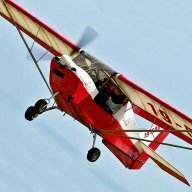While TCAS may be better, the cost of those systems makes it impractical for small aircraft - even for commercial IFR operators, let alone recreational types.
A few years back the charter industry was squealing about being forced to put in ADS-B OUT gear - a far cheaper option than full TCAS.
Yet, with the current rebate program even recreational types can get, let's say, 75% of the TCAS safety function for, what?, 5% of the cost. (By carrying approved EC IN/OUT devices.)
In their own Mangalore report, the ATSB opined that had either or both aircraft carried even such basic ADSB IN/OUT gear then it might all have been avoided.
Also, the Coroner's Recommendation # 1 has something to say on the issue of "Departure Calls" which have been discussed here recently in other threads.
From the CORONIAL INQUIRY INTO THE MANGALORE AIRCRAFT ACCIDENT
Recommendation 1: I recommend that CASA develop and disseminate educational material for the aviation industry aimed at reinforcing the importance of accurate departure calls being made by pilots in command of aircraft. It is a matter for CASA to determine the process by which the educational material is disseminated to the aviation industry.
Recommendation 2: Airservices, in anticipation of harmonisation of operating requirements for Brisbane ATSC and Melbourne ATSC, provide additional training to ATCs on managing and responding to STCAs within 5 nautical miles of aerodromes with similar aircraft movements to Mangalore.
Recommendation 3: 80 Airservices should consider providing additional training to current and prospective Air Traffic Controllers on the use of velocity vectors in Class G airspace. It is a matter for Airservices to determine how this training is developed and facilitated.
Recommendation 4: I recommend that the ATSB, AMSA and CASA continue to work together to promote the voluntary update of ADS-B technology in Australian-registered aircraft. It is a matter for the ATSB, AMSA and CASA to determine how to best promote this initiative in the aviation industry.
Recommendation 5: I recommend that CASA conduct a cost-benefit study into the feasibility and potential benefits of requiring the installation of ADS-B IN devices in IFR-certified aircraft.
Recommendation 6: I recommend that the Minister for the Commonwealth Department of Infrastructure give consideration to expanding the ADS-B rebate program to extend to Australian registered IFR aircraft.











